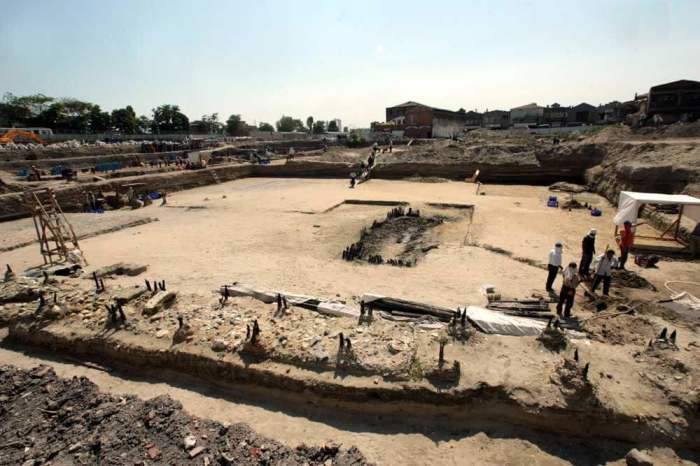Archaeologists Find Biggest Discovery of the Year in Turkey

Archaeologists are saying the discovery of a tomb in Turkey will be the biggest and most significant discovery of the year.
The tomb, known as a kurgan, was discovered by archaeologists in the Silivri district in Istanbul in recent weeks. It holds what is believed to be a highly-regarded warrior dating back 5,000 years during the Bronze Age.
The warrior was buried with his horses and arrowheads, as well as gifts believed to be for the afterlife.
As Hurriyet Daily News reports, this tomb is the oldest kurgan-type tomb to be discovered in the country, and is also of archaeological significance because it was found fully intact.
Mehmet Özdoğan, a professor at Istanbul University's department of archaeology, told the media outlet that the discovery is "very important" because it dates back to the Bronze Age, and its intact nature will provide insight into the burial practices of that time.
There have been numerous other tomb discoveries in Turkey, including the possible uncovering of the Tomb of Philip, one of Jesus' 12 apostles, found in the city of Pamukkale in southwest Turkey in 2011.
The tomb was discovered by Italian archaeologists nearby where it was originally believed to be.
"St. Philip is considered a martyr. In fact, the church built in his name on the Martyrs' Hill is, for this reason, also called Martyrion, despite the fact there were no traces of the grave of St. Philip. As we were cleaning out the new church we discovered a month ago, we finally found the grave. With close examination, we determined that the grave had been moved from its previous location in the St. Philip Church to this new church in the fifth century, during the Byzantine era," Francesco D'Andria, director of the Institute of Archaeological Heritage, Monuments and Sites in Italy, told Discovery News in 2011.
"We are extremely happy and proud to have discovered the grave of a saint whose name appears in the Bible — this surely is an important discovery for religious tourism, archaeology and Christendom."
Earlier this year, archaeologists discovered a fifth century underground church in the country's Cappadocia region that includes images of Jesus rising to the sky.
Hasan Unver, mayor of Nevsehir, told Hurriyet Daily News in February that the church proves to be a miraculous discovery as it contains nearly intact frescos.
"This place is even bigger than the other historical churches in Cappadocia. It was built underground and has original frescoes that have survived to this day," the mayor told the media outlet earlier this year.
"We didn't even think of finding such a structure when we first started works. But excavations and cleaning work are continuing and we hope to find new data relating to the history of Cappadocia," Unver continued.
"It is reported that some of the frescoes here are unique," Unver added. "There are exciting depictions like fish falling from the hand of Jesus Christ, Him rising up into the sky, and the bad souls being killed. When the church is completely revealed, Cappadocia could become an even bigger pilgrimage center of Orthodoxy."





























